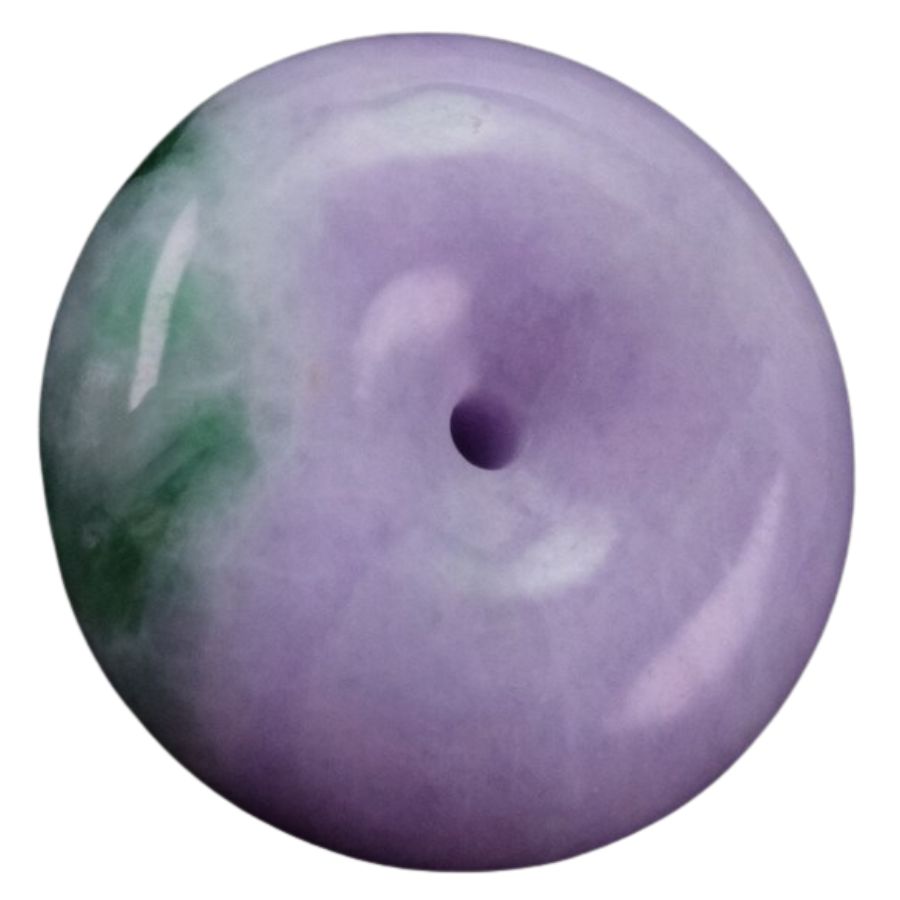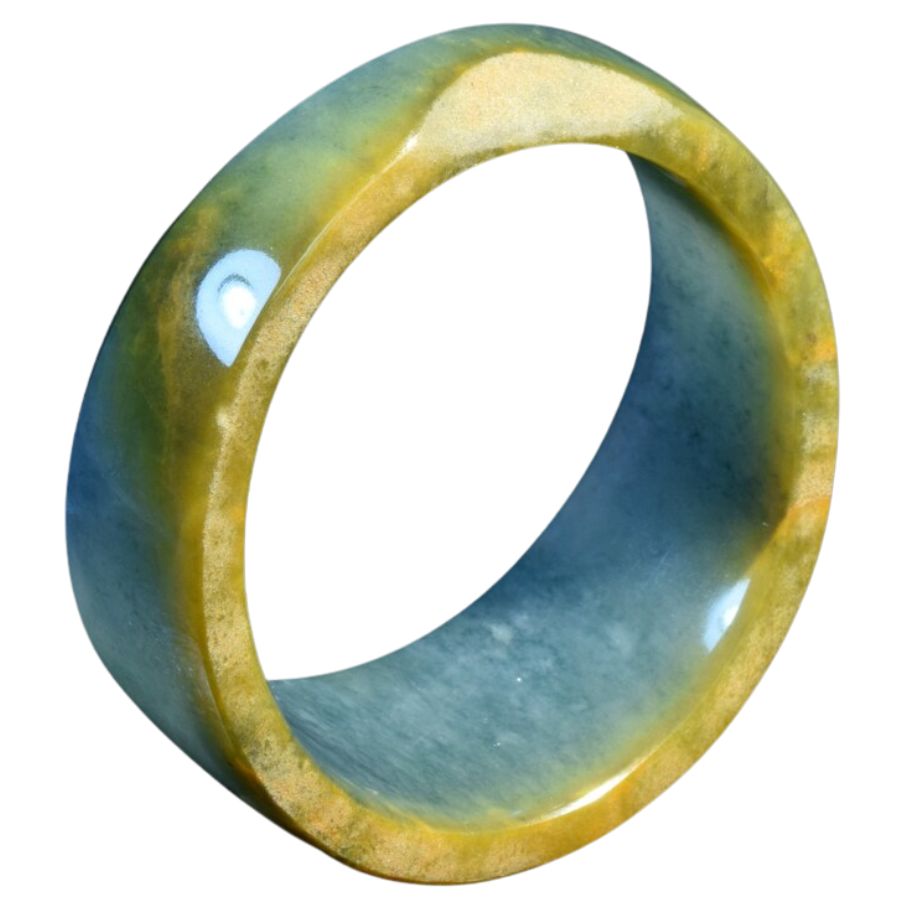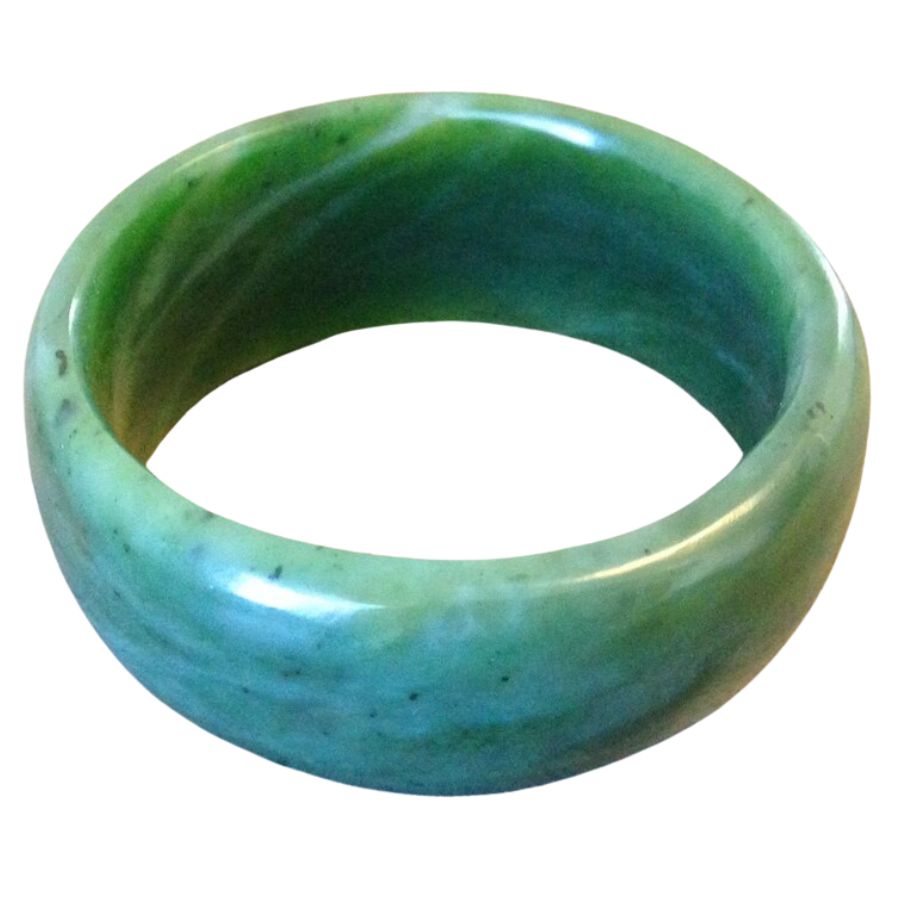Jade is a beautiful and fascinating stone that has been cherished for thousands of years. We’ll be looking into the different types of jade, highlighting their unique qualities and importance.
Each type of jade has its own special color, texture, and history. Learning about these can help us understand why jade has been so valued throughout the world.
In exploring these stones, the talk will cover the various types of jade, what they look like, and where they can typically be found. This will provide a clearer picture of the beauty and diversity of jade.
The 16 Different Types Of Jade And What They Look Like
Jade comes in a variety of forms and appearances. The two main types of jade are jadeite and nephrite, each possessing unique characteristics.
These two jade types are further classified into other kinds based on their appearance and the locations where they’re found. These classifications often use trade names, which help in identifying and differentiating them.
Understanding the variety of jade types is fascinating, as each kind offers a glimpse into the rich tapestry of colors and textures that jade can exhibit. This discussion will shed light on these various types and their distinct features.
Imperial Jade

Imperial jade, also known as fei cui jade, represents the very finest quality of jadeite jade. It’s known for its vivid, almost translucent emerald green color, setting it apart from other types of jade.
As a type of jadeite, imperial jade is more valuable and sought after due to its color and clarity. The rich green hue is often uniform, making it a top choice for high-quality jewelry and decorative items.
This exquisite stone not only captivates with its beauty but also with its smooth and glossy texture. Its appearance is so prized that it has become a benchmark for comparing other jadeite.
Imperial jade is the most prized variety of jade. The value of jade varies greatly, but pieces featuring the deep green and clear qualities of imperial jade are often considered the most valuable.
Where you can find imperial jade
Imperial jade, the most valued type of jadeite, is predominantly found in Myanmar, specifically in the Kachin State’s mines.
These mines have been the source of high-quality jade for centuries, producing stones with the deep, vibrant green color that defines imperial jade.
DON'T MISS OUT ON ANY GREAT FINDS!
While you're out searching you're going to find A LOT of other interesting rocks and minerals along the way. The last thing you want to do is toss out something really interesting or valuable. It can be easy to misidentify things without a little guidance.
You absolutely need a good reference guide in order to understand what you're looking at!
We've put together a fantastic field guide that makes identifying 140 of the most interesting and valuable rocks and minerals you will find REALLY EASY. It's simple to use, really durable, and will allow you to identify just about any rock and mineral you come across. Make sure you bring it along on your hunt!
Now, back to the identification specifics:
Apple Green Jade

Apple green jade is a type of jadeite known for its fresh, vibrant green color. This shade is reminiscent of a ripe apple, giving this stone its descriptive name.
This jade’s color is typically uniform, providing a smooth and even hue throughout the stone. Its appearance is further enhanced by a natural luster that, when polished, gives it a glossy, inviting finish.
Apple green jade’s texture is also fine and compact, contributing to its overall delicate and appealing look. It’s this combination of color and texture that makes apple green jade a popular choice for a variety of decorative purposes.
Where you can find apple green jade
Apple green jade is primarily found in Myanmar, known for having the largest and most significant deposits of high-quality jadeite. The mines in this region produce a variety of jade colors, including the vibrant apple green.
Moss-in-Snow Jade

Moss-in-snow jade is a distinctive type of jadeite known for its unique color pattern. It features a combination of bright green spots or streaks that resemble moss, set against a background of translucent white, much like snow.
This striking contrast in colors makes moss-in-snow jade visually appealing and distinctive among other jade types. The green “moss” portions are usually scattered in an organic, natural pattern, adding to its aesthetic charm.
The texture of moss-in-snow jade is smooth and glossy, often polished to highlight its color contrast. The translucency of the white part of the stone, coupled with the vivid green, creates a stunning visual effect that catches the eye.
Where you can find moss-in-snow jade
Moss-in-snow jade is mainly sourced from Myanmar, which is renowned for its diverse and high-quality jadeite deposits. This type of jade is also found in smaller quantities in other parts of the world, such as Guatemala.
Spinach Jade

Spinach jade, a type of nephrite jade, is known for its rich, deep green color that resembles the leafy vegetable spinach. This distinct shade sets it apart from other jade varieties, providing a unique example of what jade looks like.
The texture of spinach jade is typically smooth and even, with a matte finish that differs from the glossy appearance of other jade types. Its opaque quality and consistent coloring give it a robust and earthy feel.
Spinach jade is often used in carvings and decorative objects due to its workable nature and striking color. The durability and strength of this jade make it suitable for intricate designs, showcasing its natural beauty in various forms.
Where you can find spinach jade
Spinach jade is predominantly found in China, known for its rich history of jade carving and use. Other notable sources include Taiwan and Canada, where various qualities of this green-hued stone are extracted.
Siberian Jade

Siberian jade is a type of nephrite jade, renowned for its deep, rich green color. This shade can range from a medium to a dark green, often with a slightly translucent quality.
The texture of Siberian jade is smooth and has a waxy luster when polished. It’s typically quite dense and feels solid and heavy when held.
Unlike some other types of jade, Siberian jade tends to have fewer inclusions, giving it a more uniform appearance. Its consistent color and texture make it a popular choice for a variety of decorative uses.
Where you can find Siberian jade
Siberian jade is primarily found in eastern Russia, particularly in the areas around Lake Baikal. This region is known for its harsh climate, which contributes to the unique quality and formation of the jade found there.
Lavender Jade

Lavender jade is a type of jadeite known for its delicate purple color, ranging from a light, soft lavender to a deeper violet shade. This gentle hue gives it a sense of warmth and makes it highly sought after for its unique beauty.
The surface of lavender jade is often polished to a high shine, enhancing its translucent to semi-transparent quality. This polish brings out the depth and richness of the lavender color, making each piece visually striking.
Despite its name, lavender jade’s coloration can sometimes lean towards pinkish or bluish tones.
Where you can find lavender jade
Lavender jade is primarily found in western Anatolia, Turkey, specifically in Harmancık.
Mutton Fat Jade

Mutton fat jade is a distinctive type of nephrite jade, known for its creamy white color. This color resembles the fat of mutton, hence its unique name.
The texture of mutton fat jade is smooth and often has a greasy luster, making it stand out among other types of jade. Its appearance can range from completely opaque to slightly translucent, adding to its variety.
In terms of its structure, mutton fat jade is dense and possesses a high degree of toughness. This makes it not only visually appealing but also durable and resilient, suitable for a variety of uses.
Where you can find mutton fat jade
Mutton fat jade is primarily found in China, which has a long history of appreciating and utilizing this type of jade. Additionally, smaller deposits of mutton fat jade have been discovered in the US, New Zealand, and Canada.
For those interested in seeking out mutton fat jade or other fascinating rocks, there are many places that offer fruitful rockhounding experiences. Check out our guide to where to go rockhounding for insights and suggestions.
Icy Jade

Icy jade is a type of jadeite known for its exceptional transparency and clarity, similar to that of ice. This quality gives it a pure and sleek appearance, making it stand out among other jade types.
The color of icy jade typically ranges from colorless to a very light green, emphasizing its icy, clear look. The more transparent and flawless it is, the more it resembles a piece of frozen water, hence the name.
Due to its clarity, icy jade often has a glass-like texture and a bright, shiny luster when polished. This creates a stunning visual effect, as light passes through it, enhancing its icy, translucent quality.
Where you can find icy jade
Icy jade is predominantly found in Myanmar, specifically in the northern regions.
Pounamu

Pounamu, also known as New Zealand greenstone, is a variety of nephrite jade cherished for its rich cultural significance and beauty. It comes in various shades of green, from deep forest hues to lighter, almost milky tones.
The stone is typically smooth and polished, giving it a lustrous, reflective surface that enhances its natural color. Pounamu often has subtle variations in color and pattern, making each piece distinct.
In terms of texture, pounamu is dense and tough, contributing to its longstanding use in tools and ornaments. Its physical properties, combined with its visual appeal, make it a beloved material in various cultural artifacts.
Where you can find pounamu
Pounamu is a special stone that you can only find in New Zealand, making it quite rare and unique.
Olmec Blue Jade

Olmec blue jade is a really interesting type of stone with a deep, rich blue color. It’s so special because this kind of blue isn’t very commonly found in jade.
The blue in Olmec blue jade can vary a bit, from lighter sky blues to darker, more intense shades. Often, it’s not just a single color, but can also have interesting patterns and variations. These patterns can look like swirls or streaks.
Where you can find Olmec blue jade
Olmec blue jade is a rare mineral that’s mainly found in areas that were once part of the Olmec civilization in Mesoamerica.
These regions, primarily in what is now Mexico and Guatemala, are where this unique blue jade was originally discovered and used.
Yunan Jade

Yunan jade is a type of nephrite, a mineral known for its toughness and smooth texture. This jade has a rich, creamy color that often blends green and white tones, giving it a distinctive and attractive appearance.
The surface of Yunan jade is glossy, reflecting light with a soft, almost silky sheen. Under different lighting conditions, Yunan jade can show subtle variations in color.
These variations range from deep, forest greens to lighter, almost translucent whites.
Where you can find Yunan jade
Yunan jade is primarily found in the Yunan province of China, a region known for its rich mineral deposits.
Polar Jade

Polar jade is a special type of nephrite, which is a mineral known for its strength and smoothness. It stands out because of its bright green color, which is often compared to the green seen in northern lights.
This jade has a glossy surface that reflects light beautifully, making its colors appear even more vibrant. Its smoothness is not just visually appealing but also gives it a pleasant feel when touched.
One of the interesting aspects of polar jade is how its color can vary under different lighting conditions. From deep, rich greens in sunlight to softer, more subtle hues in shade, polar jade shows a delightful range of greens.
Where you can find polar jade
Polar jade is primarily found in the Polar regions, particularly in Canada’s jade deposits.
Hetian Jade

Hetian jade is a type of nephrite jade, known for its exceptional smoothness and toughness. It is usually found in shades of white, cream, and green, each giving it a distinct and appealing look.
This jade often has a creamy, translucent quality, allowing light to pass through and enhance its natural colors. The smooth, polished surface of Hetian jade reflects light, giving it a subtle, yet lustrous glow.
One of the striking features of Hetian jade is its texture, which is both dense and finely grained. This texture not only contributes to its strength but also its silky feel.
Where you can find Hetian jade
Hetian jade is predominantly found in the Hetian, or Hotan, region in Northwestern China.
Washington Jade

Washington jade is known for its diverse color range, primarily featuring various shades of green. The hues can vary from deep, rich greens to lighter, more subtle tones, each offering a unique visual appeal.
The texture of Washington jade is typically smooth and can have a waxy to glassy luster when polished. This gives the stone a natural shine that highlights its color and patterns.
In terms of appearance, Washington jade often has a fine to medium grain. The density and hardness of the stone make it a popular choice for a range of uses, from decorative items to jewelry.
Where you can find Washington jade
Washington Jade is mainly sourced from the western foothills of the Cascade Mountains, near the small logging community of Darrington.
If you’re interested in learning more about gem and crystal mining and discovering how to find such treasures themselves, check out our guide to finding gems near you.
Flower Jade

Flower jade is a distinctive type of jade known for its unique patterns that resemble flowers. These patterns are typically formed by variations in color and texture within the stone, creating a natural, floral-like appearance.
The colors of flower jade can range from deep greens to lighter hues, often mixed with whites and yellows. This combination of colors contributes to the “flower” effect, making each piece visually striking.
This jade has a smooth, glossy surface that enhances its floral patterns. The way light plays off the surface brings out the depth and richness of the colors, adding to its overall beauty.
Where you can find flower jade
Flower jade is primarily sourced from New Zealand, where its unique varieties are found.
Lantian Jade

Lantian jade is a type of white jade known for its unique colors, primarily in various shades of green and blue. It has a dense, fine texture that gives it a smooth, polished finish when carved.
This jade’s color can range from a pale, creamy green to a deep, rich turquoise, each shade offering a different appeal. The intensity and variation in color are often used to create stunning visual effects in carvings and sculptures.
Lantian jade typically exhibits a waxy luster, enhancing its natural beauty and making it stand out among other stones. Despite its hardness, it can be intricately worked into delicate shapes.
Where you can find Lantian jade
Lantian jade is specifically located in Lantian County of Shaanxi Province in China, an area long celebrated for its jade deposits.


